Federal riding redistribution process nearing end
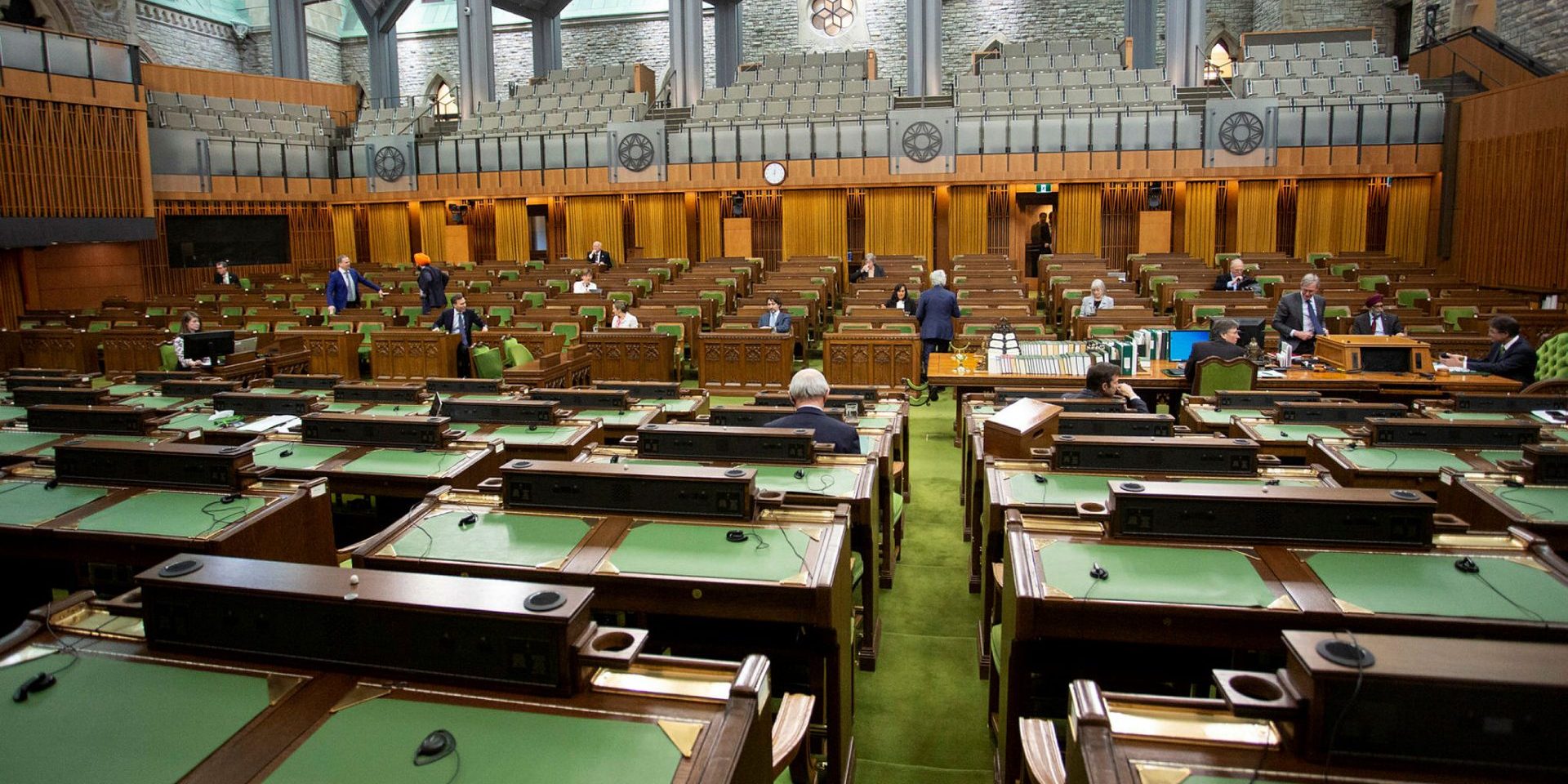
The 2023 federal riding redistribution process is entering its final stages, and with new boundaries finalized in six provinces so far, former Conservative Party operations director Fred DeLorey says now is when the rubber truly starts hitting the road for party organizers.
Political parties will have been following the redistribution process “very closely,” with “designated” staff analyzing how boundaries are changing and “what impact they have on the parties,” but as new maps are finalized, attention can turn to the administrative side of things, which is a “big part” of the redistribution effort for parties, said DeLorey, from setting up nominations to figuring out how existing riding associations will redistribute money.
“There’s 338 ridings currently, each riding has their own bank account and their own fund in that account,” he said. “Each party will have to come up with their own formula mechanism for how they’re going to distribute those funds,” which can be a “very contentious” process.
“There’s some ridings that do nothing [to fundraise] and have no money and the ridings with the money don’t like giving it away,” said DeLorey.
Federal riding boundaries in Canada are reassessed and rebalanced each decade to reflect population shifts. Five new seats are being added through this year’s process—one each in Ontario and British Columbia, and three in Alberta—bringing the House of Commons to 343 seats total.
So far, six provinces have finalized new federal electoral maps: Saskatchewan, Manitoba, New Brunswick, Nova Scotia, Newfoundland and Labrador, and Prince Edward Island. The chief electoral officer is now working to draft the new representation orders for these provinces, which are expected to be proclaimed in September. The new maps come into effect upon the first dissolution of Parliament to happen at least seven months after proclamation.
The Procedure and House Affairs Committee (PROC), which has also been busy juggling a study on foreign election interference, got extensions until June 9 to finish considering objections to the final proposed new maps for Ontario, Quebec, British Columbia, and Alberta.
Ontario
Ontario is getting one new seat—bringing it to 122—but commissioners have also proposed cutting one riding from the province’s north and one from Toronto to add new seats in Brampton, and the Halton and Durham regions, prompting considerable backlash.
Eighteen MPs raised objections over Ontario’s final proposed new map at committee.
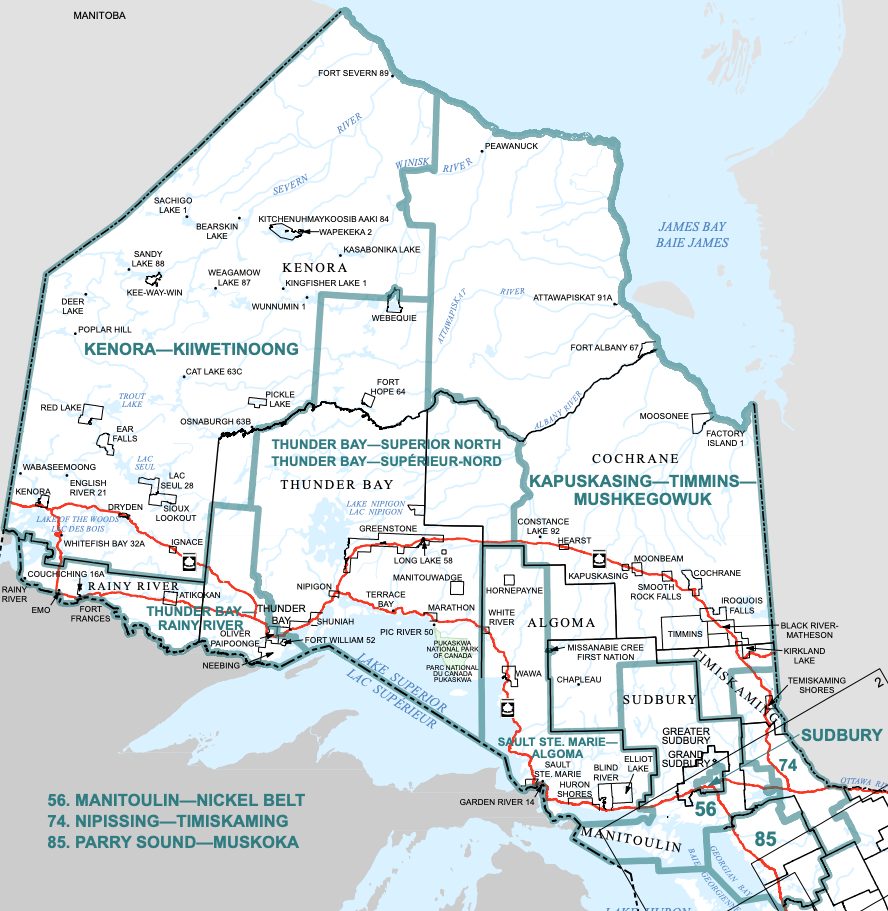
In the north, NDP MP Carol Hughes’ riding of Algoma-Manitoulin-Kapuskasing is effectively being eliminated, and she appeared on May 4 alongside her neighbours—NDP MP Charlie Angus (Timmins-James Bay, Ont.) and Liberals MPs Viviane Lapointe (Sudbury, Ont.), Marc Serré (Nickel Belt, Ont.), and Terry Sheehan (Sault Ste. Marie, Ont.)—to speak against the proposed loss of a seat in the region, dropping it from 10 seats to nine, arguing it would disenfranchise the region’s residents. The north makes up 88 per cent of Ontario’s land mass, but would be left with little more than seven per cent of the province’s federal seats, said Hughes.
Along with objecting to the seat loss, Serré asked that his riding’s name, which the commission proposed be changed to Manitoulin-Nickel Belt to reflect the addition of Espanola and Manitoulin Island to its territory, instead be changed to Sudbury East-Manitoulin-Nickel Belt.
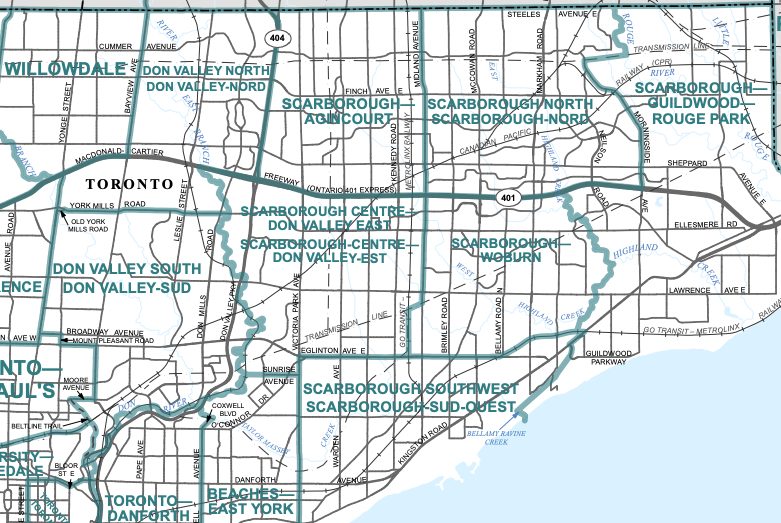
Toronto MPs had their turn before PROC on April 27, with Liberal Michael Coteau (Don Valley East, Ont.) speaking out against the proposed elimination of his riding in the commission’s final draft, as well as its proposal to have two ridings—Scarborough-Agincourt and Scarborough Centre-Don Valley East—cross the historic divide between Scarborough and North York, and its lack of consultation on the final proposal, which reversed its initial pitch to remove a seat in Scarborough at the expense of North York.
Coteau “implored” the committee to recommend the commission hold public consultations on the changes and address “the flaw in the legislation,” which only requires commissions to seek public input on initial drafts.
Liberal MP Salma Zahid (Scarborough Centre, Ont.) similarly argued against the merging of parts of North York and Scarborough within the proposed new boundaries for her riding, as well as the splitting up of a large Muslim community currently in her riding. She proposed new boundaries that she argued would better maintain communities of interest, and asked for her riding to keep its current name.
Liberal MPs Han Dong (Don Valley North, Ont.) and John McKay (Scarborough-Guildwood, Ont.) backed their colleagues’ objections.
Liberal MP Rob Oliphant (Don Valley West, Ont.) asked that his riding’s name be kept, instead of being changed to Don Valley South, and for a “small area known as Governor’s Bridge” to stay in University-Rosedale rather than being added to his riding.
Liberal MP Marie-France Lalonde (Orléans, Ont.) called for two neighbourhoods—Blackburn Hamlet and Cardinal Creek—to be kept in her riding, arguing both are part of the Orléans community and “we see ourselves as ‘one.’”
Liberal MP Vance Badawey (Niagara Centre, Ont.) asked for the city of Thorold to be kept as one in the proposed riding of Niagara South.
Conservative MP Anna Roberts (King-Vaughan, Ont.) argued that King Township should be preserved entirely within her riding, rather than having part of it moved to the proposed riding of New Tecumseth-Bradford (made up of parts of Simcoe-Grey and York-Simcoe).
Liberal MP Ruby Sahota (Brampton North, Ont.) asked that the community of Springdale—which the final draft would divide between three proposed ridings, Brampton North Caledon, Brampton-Chinguacousy, and Brampton East—“remain as intact as possible in one singular federal” riding.
Liberal MP Peter Fragiskatos (London North Centre, Ont.) spoke against the final proposal for ridings in London, Ont., which he argued doesn’t “ensure that communities of interest remain intact,” unlike the commission’s first draft. He highlighted that 37,000 London residents live in the northernmost section of his current riding that’s set to join the largely rural riding of Middlesex-London.
Conservative Ontario MPs brought objections solely focused on riding names. Thornhill’s Melissa Lantsman asked that her riding’s name be maintained, rather than renamed Vaughan-Thornhill, noting it straddles the municipalities of both Vaughan and Markham. Niagara Falls’ Tony Baldinelli objected to the proposal to rename his riding as Niagara North, suggesting it instead be called Niagara Falls-Niagara-on-the-Lake. And Barrie-Springwater-Oro-Medonte’s Doug Shipley asked for his riding’s name to stay as is to avoid confusion, rather than being tweaked to Barrie North-Springwater-Oro-Medonte.
Quebec
The House Affairs Committee’s review of the final proposed new riding map for Quebec was a busy one, with objections heard from 18 MPs.
Legislative changes last year stopped Quebec from losing a seat in the redistribution process, but the commission has proposed reallocating a seat from the eastern Gaspé Peninsula (reducing it from four to three) to the Laurentians and Lanaudière region, essentially wiping out Bloc Québécois MP Kristina Michaud’s riding of Avignon-La Mitis-Matane-Matapédia in the process.
The region’s four current MPs—Michaud, Bloc MP Maxime Blanchette-Joncas (Rimouski-Neigette-Témiscouata-Les Basques, Que.), Conservative Bernard Généreux (Montmagny-L’Islet-Kamouraska-Rivière-du-Loup, Que.), and Revenue Minister Diane Lebouthillier (Gaspésie-Les Îles-de-la-Madeleine, Que.)—appeared before PROC on March 23 to speak against the proposed reallocation, arguing it would decrease the political weight of the region and that Michaud’s and Lebouthillier’s ridings should be granted “exceptional status” under the Electoral Boundaries Readjustment Act in order to maintain the status quo despite their lower populations. They also spoke to the challenges rural MPs face in representing geographically large constituencies, with Lebouthillier highlighting that the Magdalen Islands are only accessible by plane or “by boat if you have the time and patience to travel through two procines, 700 kilometres on the road, and five hours by ferry.”
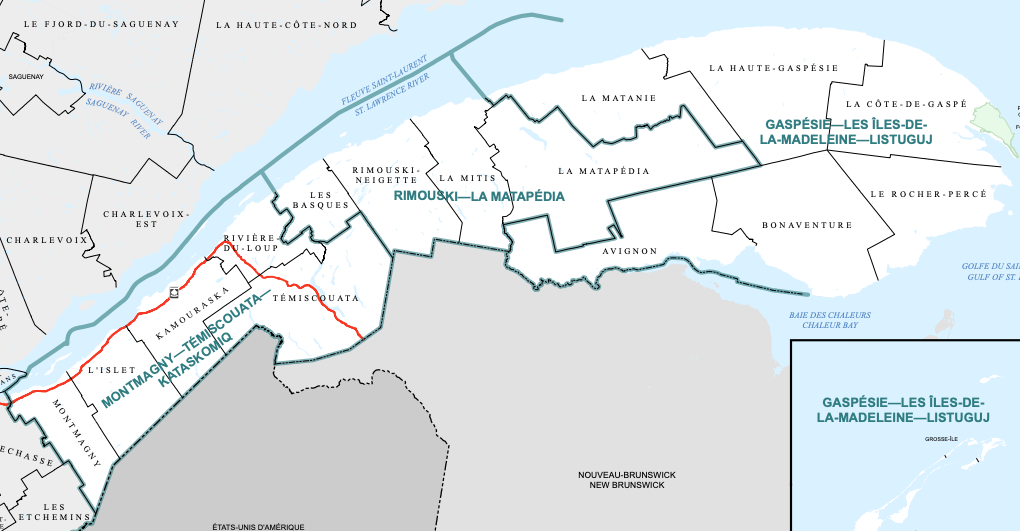
Généroux also spoke against the proposed new name for his riding—Montmagny-Témiscouata-Kataskomiq—for leaving out Rivière-du-Loup.
Bloc MPs Alexis Brunelle-Duceppe (Lac-Saint-Jean, Que.) and Mario Simard (Jonquière, Que.) spoke against a rejigging proposed in the final draft, which would see most of the current riding of Jonquière become the new version of Chicoutimi-Le Fjord, with the cities of Jonquière and Larouche instead paired with the city of Alma (currently in Lac-Saint-Jean) to form Jonquière-Alma. Both noted that combining Alma with Jonquière repeats an “historical error” corrected during the last redistribution, as they don’t share a community of interest, and “reluctantly” asked the committee to recommend the commission instead revert to its initial proposal, which saw more modest changes, with Jonquière picking up some of the Maria-Chapdelaine regional county municipality (RCM) from Lac-Saint-Jean.
NDP MP Alexandre Boulerice (Rosemont-La Petite-Patrie, Que.) focused on riding boundary changes on the Island of Montreal, with the neighbourhoods of Plateau Mont-Royal, Old Montreal, and Saint-Henri set to be broken up. Crown-Indigenous Relations Minister Marc Miller (Ville-Marie-Le Sud-Ouest-Île-des-Soeurs, Que.) also addressed the breaking up of Saint-Henri, which he asked be maintained as a whole within his riding.
Bloc MP Jean-Denis Garon (Mirabel, Que.) raised concern with the proposal to move the city of Sainte-Anne-des-Plaines from his riding to the district of Rivière-du-Nord, arguing the city and Mirabel “represent a community of interest.”
Conservative MP Luc Berthold (Mégantic-L’Érable, Que.) and Agriculture Minister Marie-Claude Bibeau (Compton-Stanstead, Que.) both spoke against the proposal to add 11 municipalities in the Lotbinière RCM from Bibeau’s riding to Berthold’s, which Berthold said have “very few ties” to the rest of his district. Berthold also called for the city of Villeroy to stay in his riding, while Bibeau asked that the cities of Weedon, Lingwick, and Scotstown remain in hers.
Bloc MP Louis Plamondon (Bécancour-Nicolet-Saurel, Que.), whose riding was set to add three municipalities from Berthold’s and Bibeau’s, supported their calls and asked that his riding be renamed Alnôbak-Bécancour-Nicolet-Saurel instead of Bécancour-Saurel-Odanak as proposed.
Bloc MP Marilène Gill (Manicouagan, Que.) criticized the proposed new name for her riding— Manicouagan-Kawawachikamach-Uapishka—noting the “Manicouagan” name given to her riding during the last redistribution is confusing, as its the name of an RCM and a river, and that the commission didn’t consult local Indigenous people in proposing the new one. Instead, she asked it be renamed Côte-Nord-Nitassinan.
Liberal MP Anju Dhillon (Dorval-Lachine-LaSalle, Que.) raised concern over the proposed removal of “LaSalle” from her riding’s name, while Justice Minister David Lametti (LaSalle-Émard-Verdun, Que.) asked for “Émard” to be returned to his, which the commission wants to change to LaSalle-Verdun.
Liberal MP Soraya Martinez Ferrada (Hochelaga, Que.) called for Rosemont-Est to be included in her riding’s name, noting part of that population has been in the riding since 1988.
Bloc MP Stéphane Bergeron (Montarville, Que.) asked for his riding to be renamed Mont-Saint-Bruno-L’Acadie (or L’Acadie-Mont-Saint-Bruno) to better acknowledge its history, geographic features, and to differentiate it from the provincial riding with the same name but “substantially different boundaries.”
Bloc Whip Claude DeBellefeuille (Salaberry-Suroît, Que.) spoke against the “major” change proposed to her riding’s name, which the commission wants to change to Beauharnois-Soulanges. She suggested it instead be renamed Beauharnois-Salaberry-Soulanges-Huntingdon to better match provincial riding names and retain “Salaberry” in reference to the riding’s largest city.
British Columbia
B.C. is getting one new riding—bringing it to 43 total—in the Southern Interior, causing a considerable shake-up in the region.
The final draft would split Kootenay-Columbia in two: Columbia-Kootenay-Southern Rockies, and Kamloops-Shuswap-Central Rockies. Most of the current riding of North Okanagan-Shuswap would be combined with the northwestern end of NDP MP Richard Cannings’ riding of South Okanagan-West Kootenay to create Vernon-Monashee. Cannings’ riding is also set to expand east to capture all of the Okanagan-Similkameen regional district, most of which is currently in Central Okanagan-Similkameen-Nicola. That riding is also losing its northern end to the proposed Kamloops-Thompson-Cariboo, with Peachland and Summerland on its eastern end kept together and newly combined with part of the current riding of Kelowna-Lake Country to form Okanagan Lake West-South Kelowna.
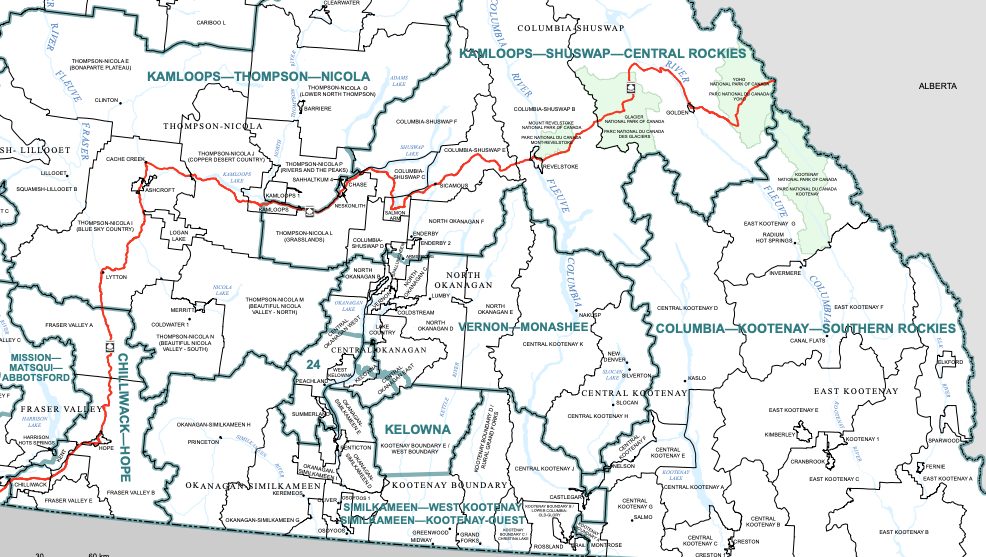
Ten MPs, including Cannings, raised objections at PROC. As previously reported, Cannings has raised significant concerns with the considerable changes proposed to his riding between the first and final drafts. At PROC, he highlighted changes to his riding’s eastern end as the most problematic, including the removal of Beaver Valley, suburbs north of Castlegar, and the Slocan Valley, and asked for them to stay together in riding with Okanagan in its name.
NDP MP Don Davies (Vancouver Kingsway, B.C.) asked for 41st Avenue to remain his riding’s southern boundary (dropping two city blocks added from Vancouver South in the process), and for its western border to instead be pushed one block west to Ontario Street.
Liberal MP Wilson Miao (Richmond Centre, B.C.) spoke against the addition of Vancouver’s Marpole neighbourhood to his riding, which sits on the north side of the Fraser River and currently falls in Vancouver Granville, noting Richmond residents on the river’s south side “don’t feel any cohesion with” it. Liberal MP Taleeb Noormohamed (Vancouver Granville, B.C.) supported Miao’s and Davies’ objections, and as well as International Development Minister Harjit Sajjan’s (Vancouver South, B.C.), which centred on the proposed division of the Sunset neighbourhood currently in Vancouver South between three ridings. As part of that, Sajjan noted Punjabi Market would go to the proposed riding of Vancouver Arbutus, while the Khalso Diwan Society would go to Vancouver Fraserview-South Burnaby, and argued the two communities should remain in the same riding.
Liberal MP Hedy Fry (Vancouver Centre, B.C.) asked for Granville Island—part of which will join Vancouver West Broadway—to be kept intact in a riding connected to Vancouver’s west end.
Fisheries Minister Joyce Murray’s riding of Vancouver Quadra was almost entirely preserved in the commission’s first proposal, but its final draft essentially splits the riding in two, between Vancouver West Broadway and Vancouver Arbutus, dividing Musquem Indian Band in the process. Murray objected to the proposal, noting there was “no consultation” on this “radical redraw.”
NDP MP Rachel Blaney (North Island-Powell River, B.C.), whose riding boundaries are essentially unchanged, asked that it be renamed North Island-qathet, a name she noted “the Tla’amin nation gave to the regional district of Powell River.”
Liberal MP Patrick Weiler’s (West Vancouver-Sunshine Coast-Sea to Sky Country, B.C.) objection concerned both the name of his riding—which the commission proposed renaming as Howe Sound-West Vancouver—and changes proposed to its eastern border that would separate the integrated neighbourhoods of Ambleside and Dundarave from West Vancouver. He asked that his riding’s southeastern border be moved from 21st Street east to 11th Street to keep Ambleside in his riding, and for its name to be preserved.
With the district of Lake Country being included in the proposed riding of Vernon-Monashee, Conservative MP Tracey Gray (Kelowna-Lake Country, B.C.) asked PROC to recommend it include “Lake Country” in its name.
Alberta
Alberta is adding three new seats as part of this year’s redistribution process, bringing it to 37.
The commission only explicitly named the three new ridings in its first proposal: Calgary McKnight (on the city’s east end), Airdrie-Chestermere (north of Calgary), and Spruce Grove-Leduc (near Edmonton).
Calgary McKnight was expanded in the final proposal, taking more of Calgary Skyview’s southern half and another chunk of Calgary Forest Lawn’s northwestern end (that riding becomes Calgary East).
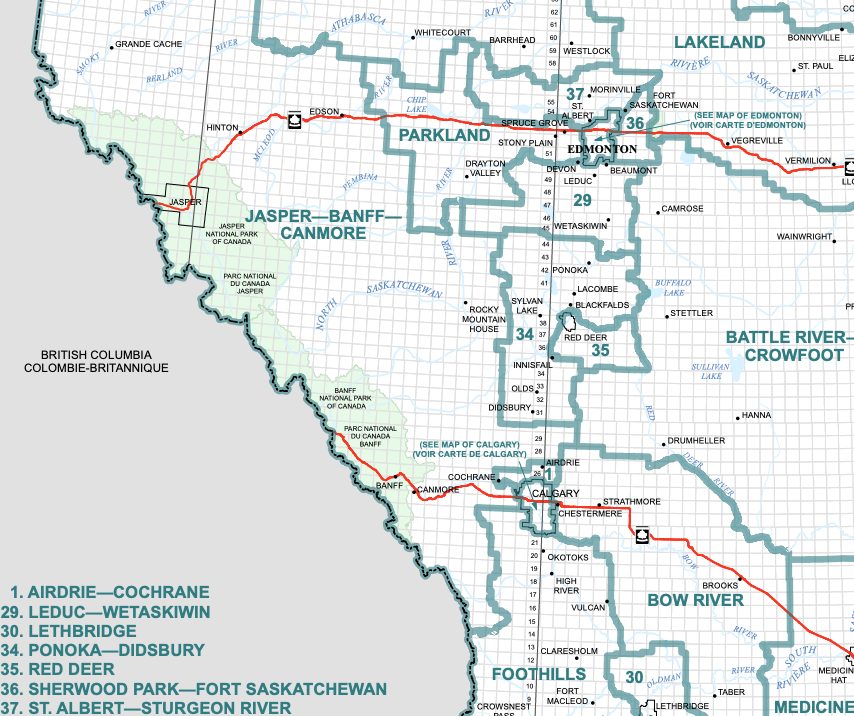
The final draft drastically reworked the pitch for central Alberta. Instead of splitting Banff-Airdrie between Yellowhead and the proposed ridings of Canmore-Cochrane-Olds and Airdrie-Chestermere, it’ll largely be divided between Jasper-Banff-Canmore (made up of most of Yellowhead) and Airdrie-Cochrane. It also scrapped the rejigging involved in creating Spruce Grove-Leduc; renamed Leduc-Wetaskiwin in the final proposal, it’s close to the current boundaries of Edmonton-Wetaskiwin. Edmonton is currently divided between nine ridings, including Edmonton-Wetaskiwin. The proposed Leduc-Wetaskiwin would sit outside city bounds, and instead Edmonton would have nine urban-only ridings.
A new riding west of Edmonton—Parkland—combines the northeastern corner of Yellowhead with the southern end of Sturgeon River-Parkland (whose northern half stays together as St. Albert-Sturgeon River) to stretch from the edge of the city west past Chip Lake.
On March 23, PROC heard objections from Tourism Minister Randy Boissonnault (Edmonton Centre, Alta.), Liberal MP George Chahal (Calgary Skyview, Alta.), and Conservative MPs Gerald Soroka (Yellowhead, Alta.), Arnold Viersen (Peace River-Westlock, Alta.), and Chris Warkentin (Grande Prairie-Mackenzie, Alta.).
Boissonnault’s concern involved the proposed extension of his riding north, past Yellowhead Highway 16, which he wants to see remain Edmonton Centre’s northern border. The riding is also set to lose its southern tip to Edmonton West, and Boissonnault asked for two neighbourhoods—Parkview and Laurier Heights—in that area to be kept in his riding.
Calgary McKnight is set to sit south of Chahal’s riding, and the one-term MP argued its northern border “should include all homes south of 96 Avenue,” and in turn, the Saddle Ridge neighbourhood—which the final draft places in the southeast corner of Calgary Skyview—should go to the new riding. Chahal also suggested Calgary McKnight should be named Calgary Skyview, and that the proposed Calgary Skyview be called either Calgary Stoney or Calgary Country Hills to better reflect incorporated communities.
As noted, Soroka’s riding of Yellowhead is being significantly rejigged, and the two-term MP told PROC the final draft’s changes lack “continuity in any shape or form, from north to south.” He wants to see Yellowhead County preserved in a single riding, keeping the name of Yellowhead.
Viersen and Warkentin brought a joint objection involving the boundary between their ridings, specifically the decision to move part of MacKenzie County into Viersen’s riding in the final proposal. They want the county kept whole within Viersen’s riding of Peace River-Westlock.
Saskatchewan
Saskatchewan’s new riding map was finalized on April 20.
Three MPs appeared before the House Affairs Committee with objections to the province’s final proposed map, including Manitoba NDP MP Daniel Blaikie (Elmwood-Transcona, Man.), who noted he was representing views shared with his party by residents of the entirely Conservative-held province.
Blaikie spoke in favour of having an urban-only riding in Saskatoon, something initially on the table through the proposed Saskatoon Centre riding and undone in the commission’s final draft. While PROC’s majority report supported the proposal, a dissenting Conservative report spoke against it. Ultimately, the commission said it “was and still is of the opinion that a central urban riding in Saskatoon is not appropriate at this time.”
Conservative House Leader Andrew Scheer (Regina-Qu’Appelle, Sask.) brought two asks to PROC: to keep two rural communities (Ituna and Wynyard) in his riding instead of moving them to Yorkton-Melville as proposed; and to return a neighbourhood east of Lewvan Drive included in the proposed new version of Regina-Qu’Appelle to the neighbouring riding of Regina-Lewvan—a call that riding’s MP, Conservative Warren Steinley, also appeared before committee to back. Steinley suggested the commission instead transfer a neighbourhood west of Lewvan Drive from Regina-Lewvan to Regina-Qu’Appelle.
Scheer’s and Steinley’s requests were unanimously supported by PROC, and the commission agreed to both.
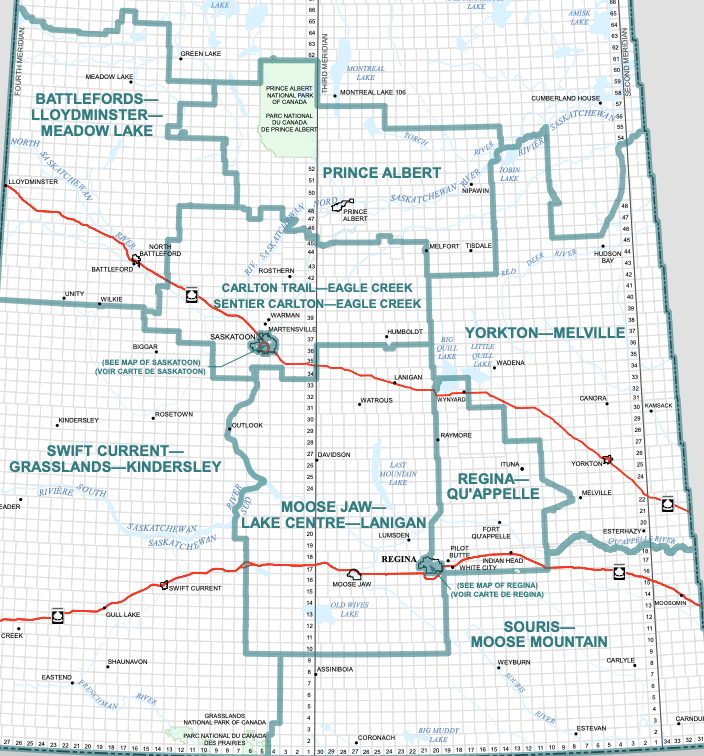
Other notable changes in Saskatchewan include to Carlton Trail-Eagle Creek, which is dropping its southwestern end—including the towns of Biggar and Rosetown—and will encircle the city of Saskatoon, picking up ground from Saskatoon-Grasswood and Moose Jaw-Lake Centre-Lanigan in the process.
Cypress Hills-Grasslands will be narrowed on its eastern end and instead extend northward, picking up Biggar and Rosetown to end just before the town of Unity. It’s new name will be Swift Current-Grasslands-Kindersley. In turn, Battlefords-Lloydminster is also expanding north, taking ground from Desnethé-Missinippi-Churchill River up past Meadow Lake; it’s new name will be Battlefords-Lloydminster-Meadow Lake. The riding of Prince Albert will now actually include Prince Albert National Park, which was previously in Desnethé-Missinippi-Churchill River; to rebalance its makeup, the riding’s easternmost end (including Tobin Lake) is going to Yorkton-Melville.
Manitoba
Manitoba’s new map was made official on April 21.
Two objections were raised by MPs over Manitoba’s final proposed riding map, including a joint appeal from NDP MP Niki Ashton (Churchill-Keewatinook Aski, Man.) and Conservative MP James Bezan (Selkirk-Interlake-Eastman, Man.).
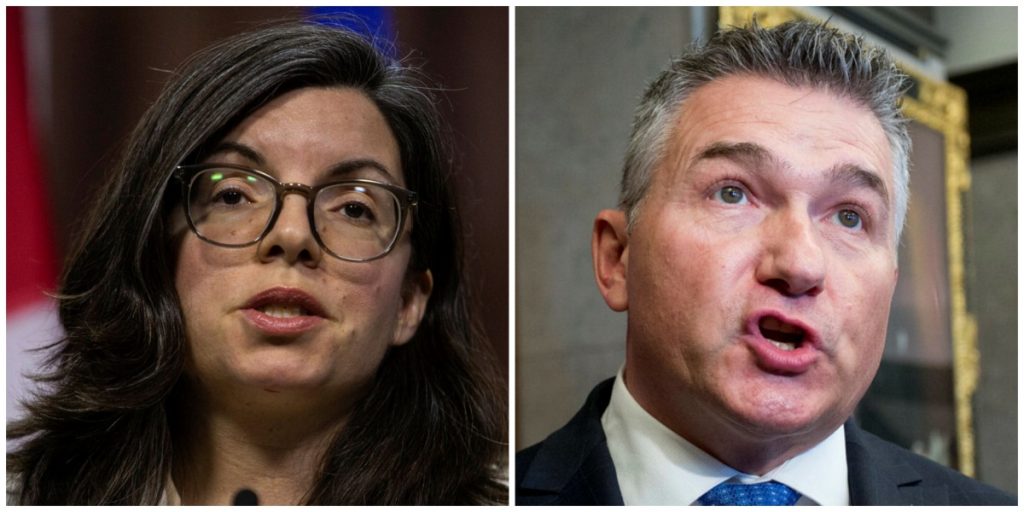
In focus was a relatively small shift of the border between their ridings made after the first draft, which saw Little Saskatchewan First Nation and part of the Lake St. Martin First Nation moved from Churchill-Keewatinook Aski into Selkirk-Interlake-Eastman—dividing a community and splitting up the seven First Nations in the eastern Interlake area. Bezan and Ashton argued the move could contribute to disenfranchisement, failed to uphold communities of interest, and that the lack of consultation made the change “unfair.” They asked for both First Nations to be preserved entirely in Ashton’s riding, and proposed a new boundary running through the rural municipality of Grahamdale.
The House Affairs Committee unanimously endorsed their asks, and the commission agreed to make the recommended changes.
It did not, however, take on changes proposed by Elmwood-Transcona MP Blaikie, which a dissenting Conservative report recommended against.
Blaikie had objected to the commission’s proposal—which has now been finalized—to expand the boundaries of Elmwood-Transcona east, past Winnipeg’s official city bounds (it currently sits entirely within them), to add part of the rural municipality of Springfield currently in Provencher, Man., making it an urban-rural split riding. Blaikie had suggested it could instead extend the riding northward, keeping within city limits and taking ground from the Conservative-held riding of Kildonan-St. Paul.
Other notable changes cemented in Manitoba include the expansion of Charleswood-St. James-Assiniboia-Headingley—currently made up of Winnipeg’s west end and the rural municipality of Headingley—north to add more rural ground from Selkirk-Interlake-Eastman; it would be renamed Winnipeg West. Dauphin-Swan River-Neepawa has also been renamed Riding Mountain, and adds a small chunk of Portage-Lisgar to its southeastern corner.
Nova Scotia
Nova Scotia’s new riding map was finalized on April 21.
Three Liberal MPs—Jaime Battiste (Sydney-Victoria, N.S.), Lena Diab (Halifax West, N.S.), and Immigration Minister Sean Fraser (Central Nova, N.S.)—raised objections to the final proposed map for the province at PROC.
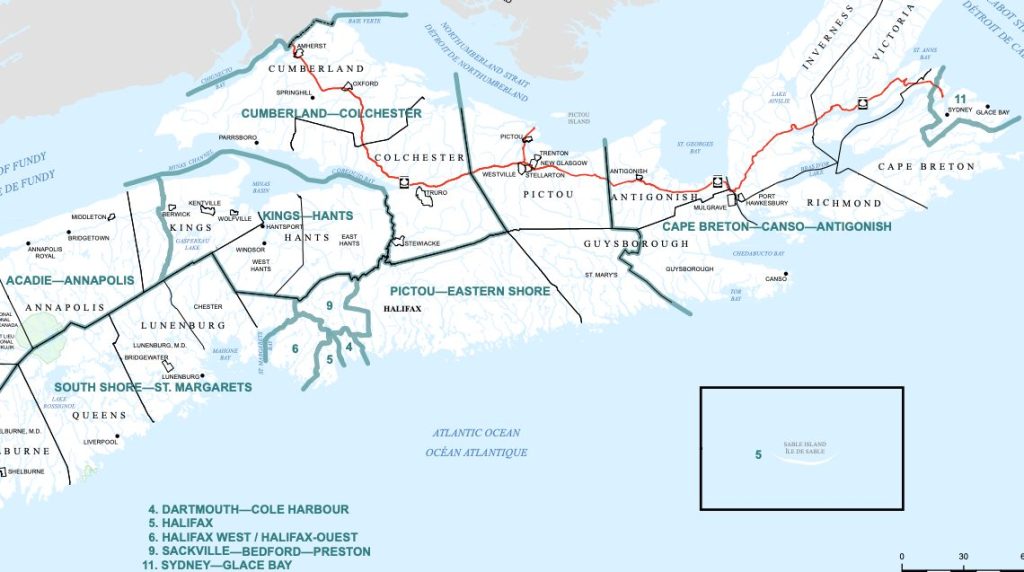
Most notably, Battiste spoke to his surprise and outrage at the redistribution commission’s decision to drastically redraw his riding’s boundaries after leaving them untouched in the first draft, upon which public consultations were based.
Citing public input calling for creation of an “urban” riding to reflect “industrial” Cape Breton, Sydney was hived off into a smaller riding with nearby Glace Bay (to be named Sydney-Glace Bay) in the final draft, with the rest of Battiste’s riding combined with Cape Breton-Canso (along with the part of Antigonish County currently in Central Nova) to form Cape Breton-Canso-Antigonish. Noting the impact on local Mi’kmaq communities—namely Eskasoni and Wagmatcook—Battiste argued the move violated their constitutional right to consultation, ran counter to the spirit of reconciliation, would negatively impact their federal representation, and could lead to legal action if followed through.
PROC backed Battiste’s appeal (though a Conservative dissenting report did not), but the commission opted to stick to its plan.
In its response, the commission said it “exceeded” consultation requirements prescribed by law by holding not one public hearing, but eight, and argued the Section 35 “duty to consult Indigenous communities does not arise in present circumstances.” Due to population spread, “Cape Breton has to have two federal ridings, each of which will contain at least one Indigenous community,” wrote commissioners, arguing that rather than reduce their electoral power, the change will increase it.
Battiste has voiced disappointment over the commission’s decision, and in a May 8 statement, the Assembly of Nova Scotia Chiefs joined Eskasoni First Nation Chief Leroy Denny and Wagmatcook Chief Norman Bernard in criticizing its failure to uphold the principles of reconciliation. “We are now left to advance a legal review of this decision,” said Denny. Concerned parties have until the end of May to file a legal challenge.
The commission similarly shot down Diab’s appeal to reverse changes to add some communities in St. Margaret’s Bay to Halifax West from the neighbouring riding of Halifax. Diab had asked it to stick to its first proposal, which also saw Halifax West lose slightly less ground in the north.
The commission also set aside Fraser’s objection to part of Antigonish County being moved from his riding (and therefore separated from Pictou County), as well as his concern over the riding’s extension west into the suburbs of Halifax, but agreed to his appeal to keep the riding’s name as Central Nova (rather than renaming it Pictou-Eastern Shore—the only objection supported in the dissenting report).
New Brunswick
New Brunswick’s new electoral map was finalized on April 14.
New Brunswick Southwest Conservative MP John Williamson was the lone MP to raise an objection to the province’s final proposal.
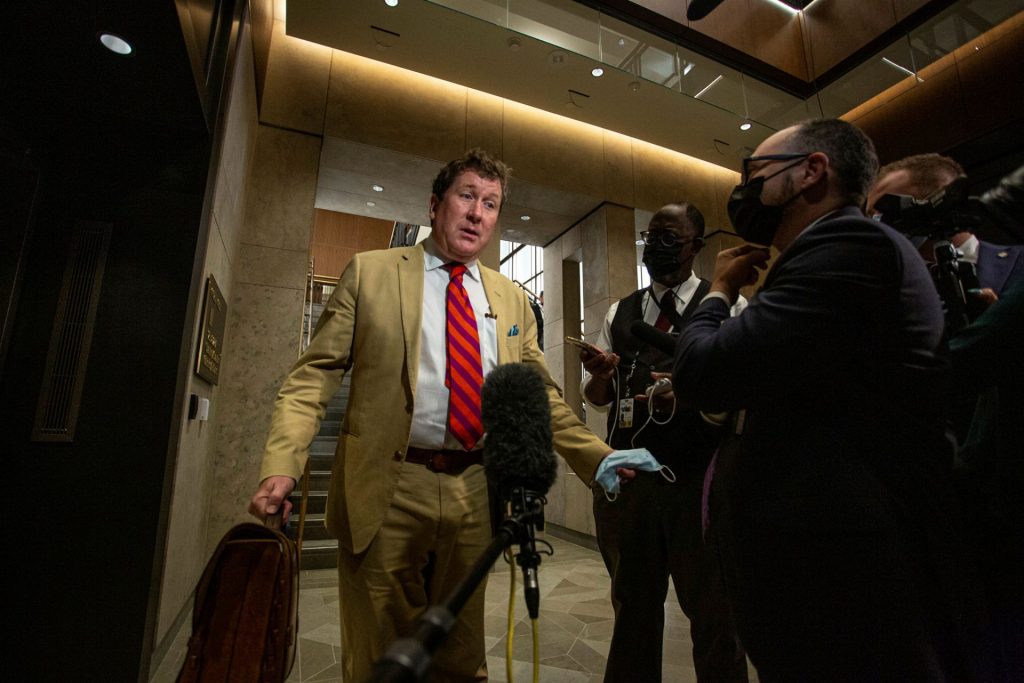
His concern centred on the commission’s proposed new name for the riding he’s represented since 2019: Saint John-St. Croix. Williamson, who also held the riding from 2011 to 2015, made a case for keeping its name, arguing in part that the change wouldn’t properly reflect communities within it.
PROC backed Williamson’s objection, but the commission chose to go ahead with the name change, noting, among other things, that the reconfigured riding “is not entirely situated in the southwestern quadrant of New Brunswick.” Saint John-St. Croix drops the civil parishes of Dumfries, Prince William, Manners Sutton, Kingsclear, and Hanwell—which have been incorporated into Tobique-Mactaquac—and picks up ground in the city of Saint John west of the Saint John River and Harbour from the riding of Saint John-Rothesay, which has been renamed Saint John-Kennebecasis (and otherwise adds the suburb of Quispamsis, which sits in the lower Kennebecasis River valley, to its northeastern corner).
Other notable changes in the province include to the riding of Fredericton, which will tighten around the city’s official municipal boundaries (keeping the nearby village of New Maryland). Communities west of the city—from Sunbury County down to Canning Parish—will move to Miramichi-Grand Lake, while Burton Parish to the east will join Saint John-St. Croix.
Prince Edward Island
There were no MP objections to the P.E.I. redistribution commission’s final proposal, making it the province’s official new federal electoral map.
Canada’s smallest province is seeing the smallest changes to its four ridings. Egmont’s southeastern boundary has been pushed east to pick up Lower Bedeque, North Bedeque, and the rural municipality of Bedeque and Area from the neighbouring riding of Malpeque.
Malpeque’s northeastern border will similarly be pushed east to pick up the part of the North Shore rural municipality—including the communities of Grand Tracadie and Corran Ban—that’s currently in the riding of Cardigan.
Newfoundland and Labrador
Newfoundland and Labrador’s new map has been finalized, with no objections raised or changes made to the final proposal.
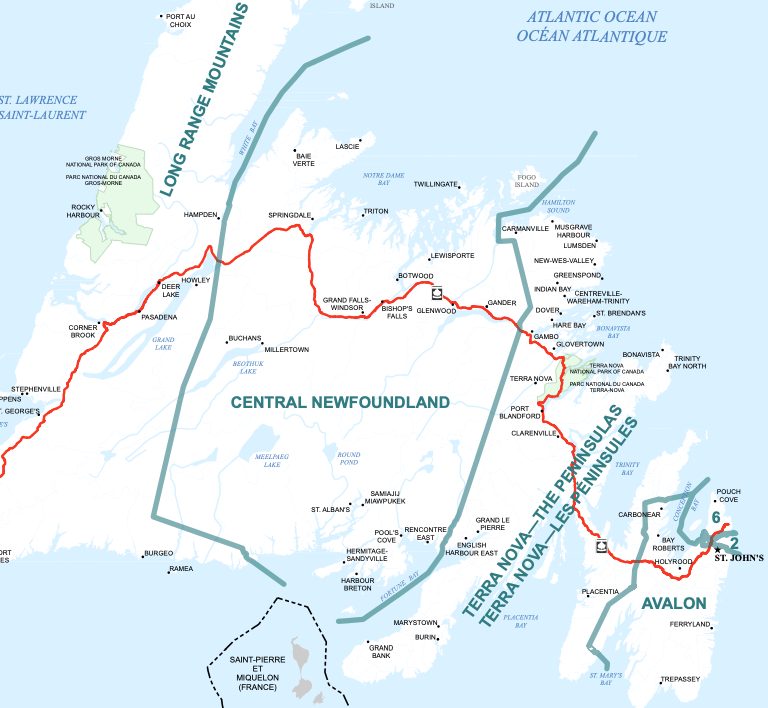
The most notable changes in the province include to the riding of Bonavista-Burin-Trinity, which is adding Placentia and most of the Cape Shore region currently in Avalon to its southeastern end and has been renamed Terra Nova-The Peninsulas.
While it’s losing ground in the southwest, Avalon is expanding northeast to pick up much of St. John’s South-Mount Pearl, including Conception Bay South. The latter riding is being reworked and renamed as Cape Spear, and will include the town of Paradise (currently part of Avalon), Mount Pearl, the western half of St. John’s (minus ground around St. John’s Harbour, which has been added to the riding of St. John’s East), Petty Harbour-Maddox Cove, and Cape Spear itself.
Though its boundaries are seeing little change, Coast of Bays-Central-Notre Dame will be renamed Central Newfoundland.
Editor’s Note: This story was updated on May 18 to correct that Alberta Conservative MPs Arnold Viersen and Chris Warkentin asked the House Affairs Committee to recommend that MacKenzie County be kept whole within the riding of Peace River-Westlock, not in the same riding as Grande Prairie. The Hill Times apologizes for this error.
The Hill Times

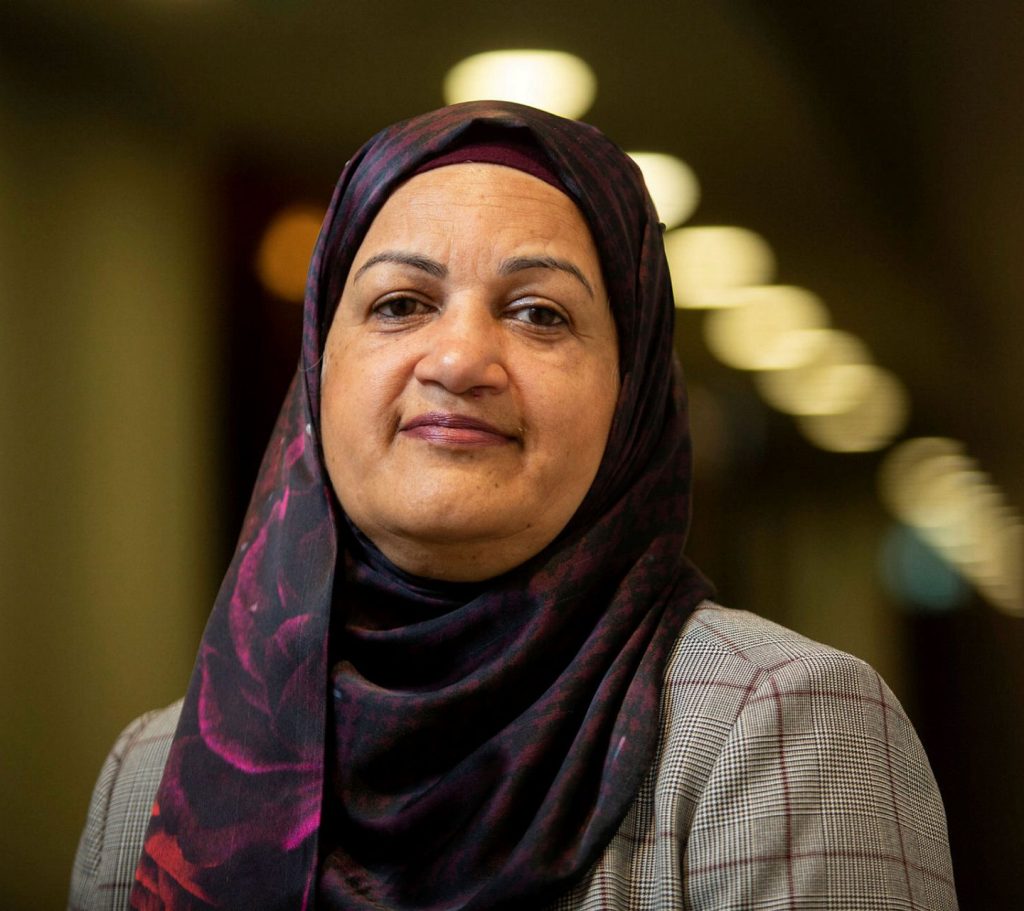
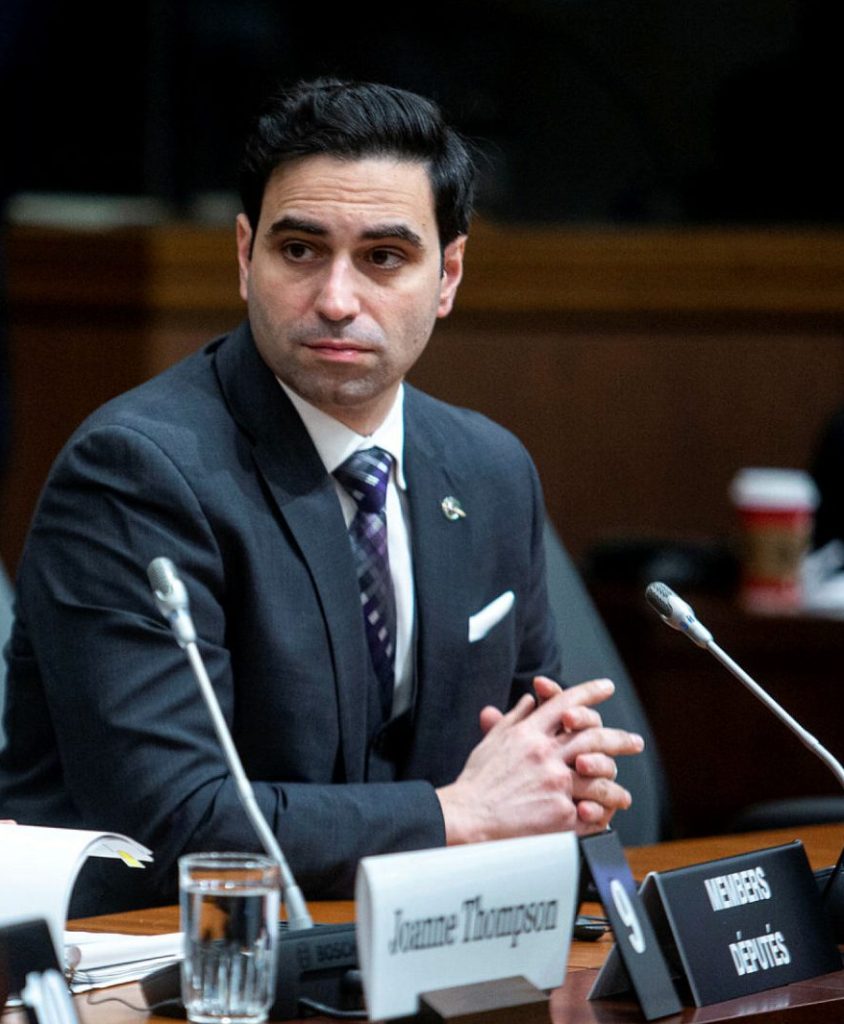
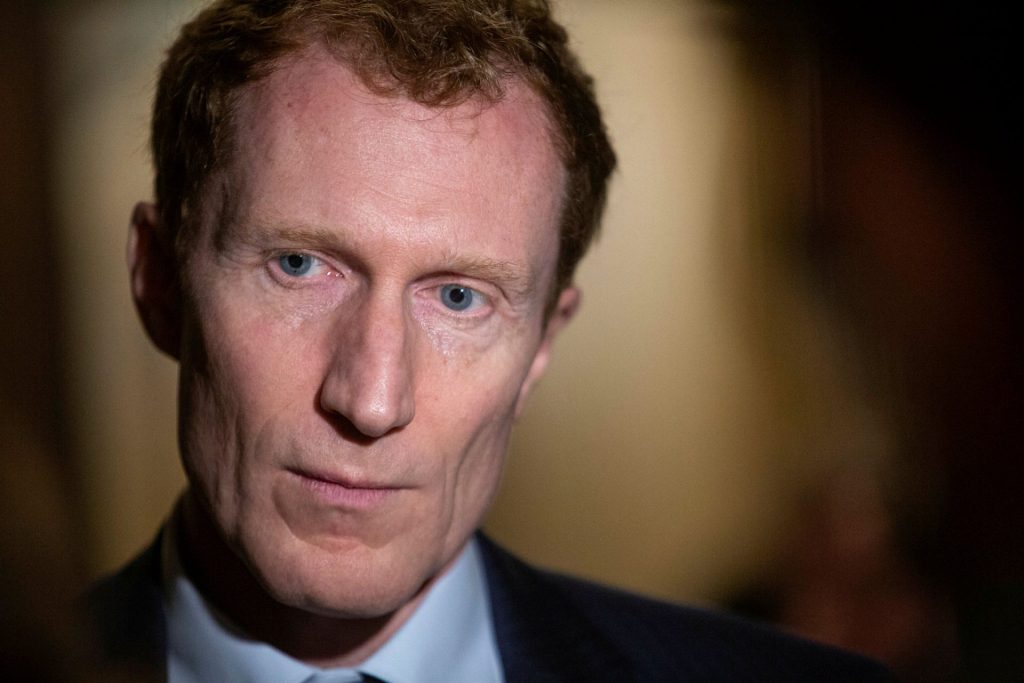

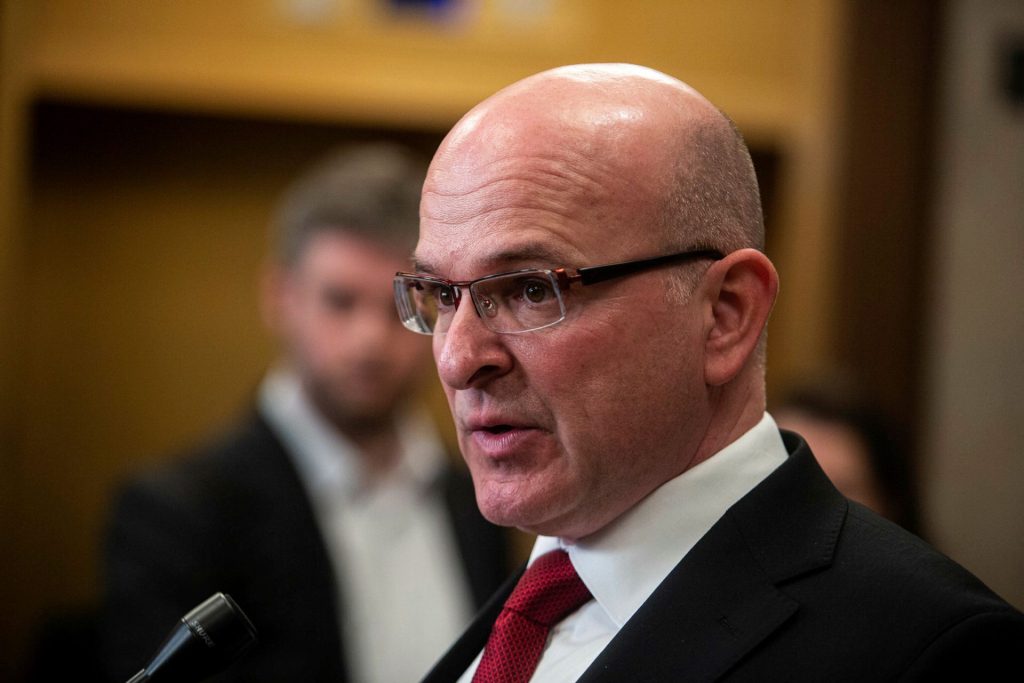
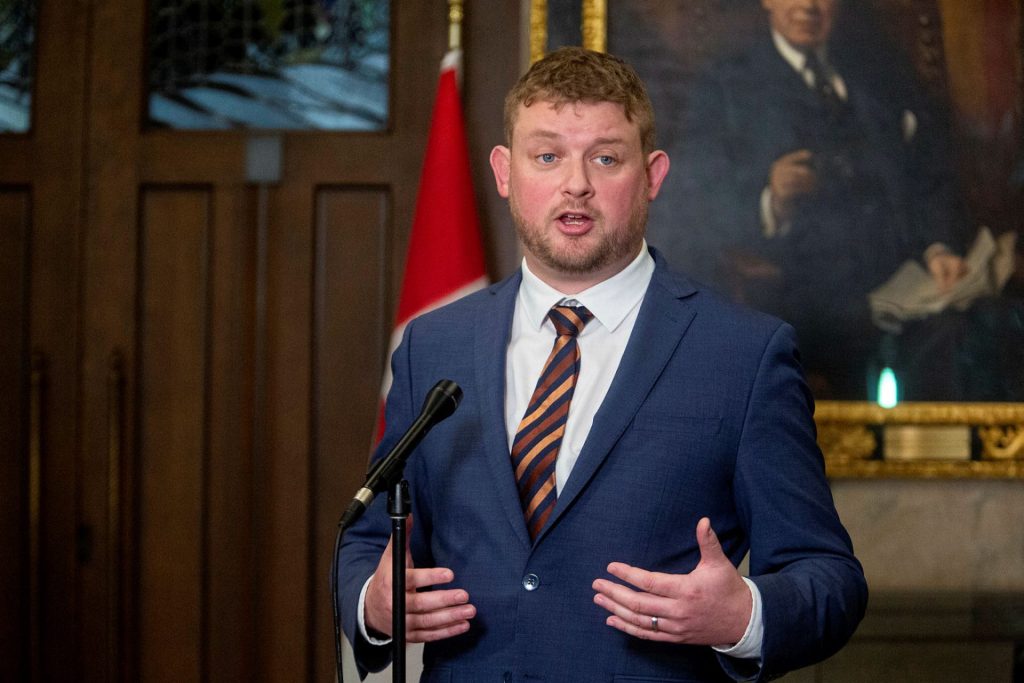
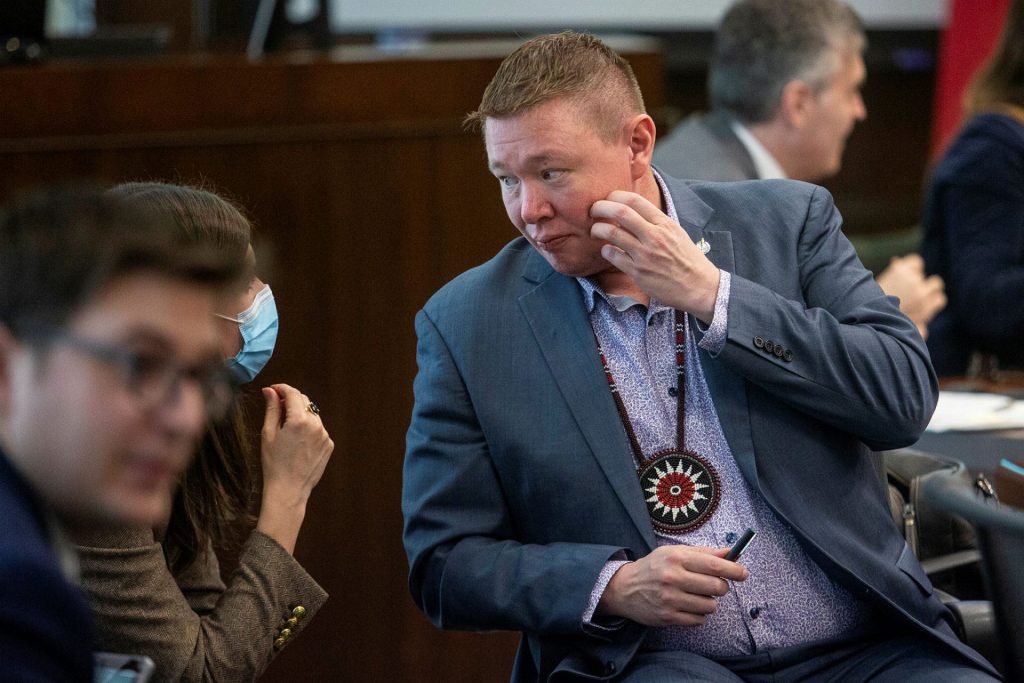





 LICENSING
LICENSING PODCAST
PODCAST ALERTS
ALERTS













